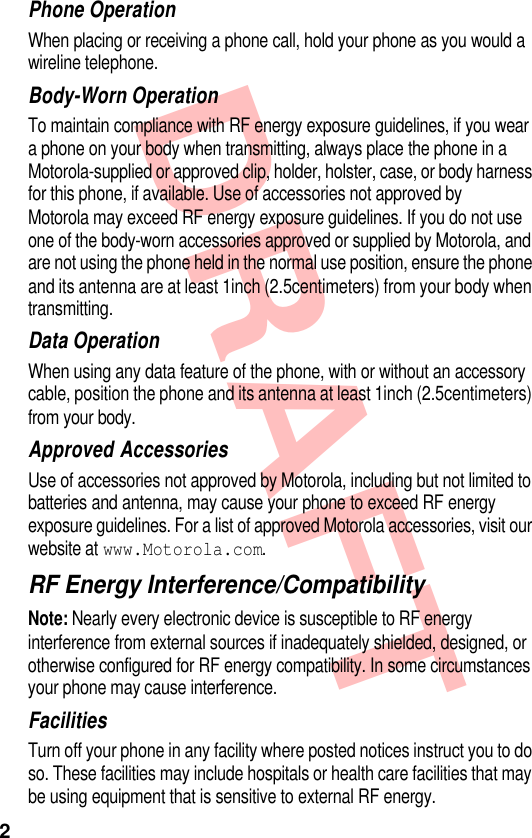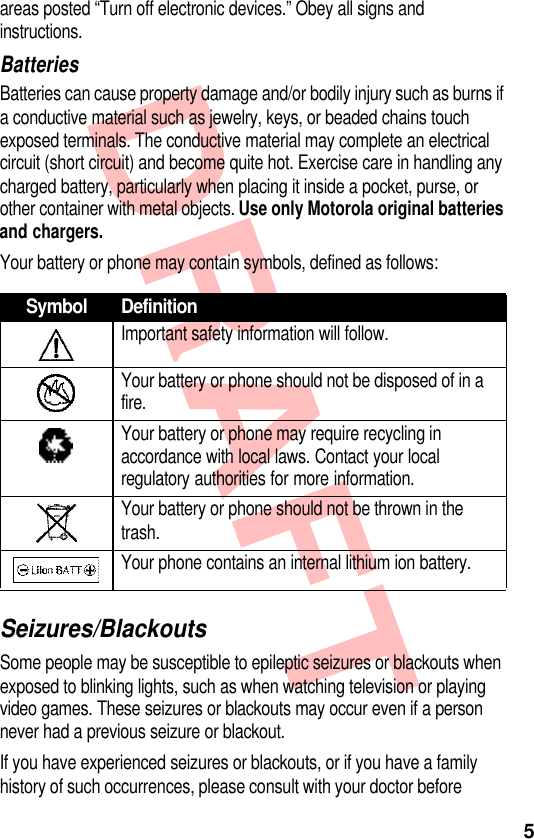Motorola Mobility T56CN1 Portable PCS GSM Transceiver User Manual ITC03 194
Motorola Mobility LLC Portable PCS GSM Transceiver ITC03 194
Contents
- 1. Supplemental Response to TC3046 Users Manual
- 2. Exhibit 8 Preliminary Users Manual
Supplemental Response to TC3046 Users Manual





